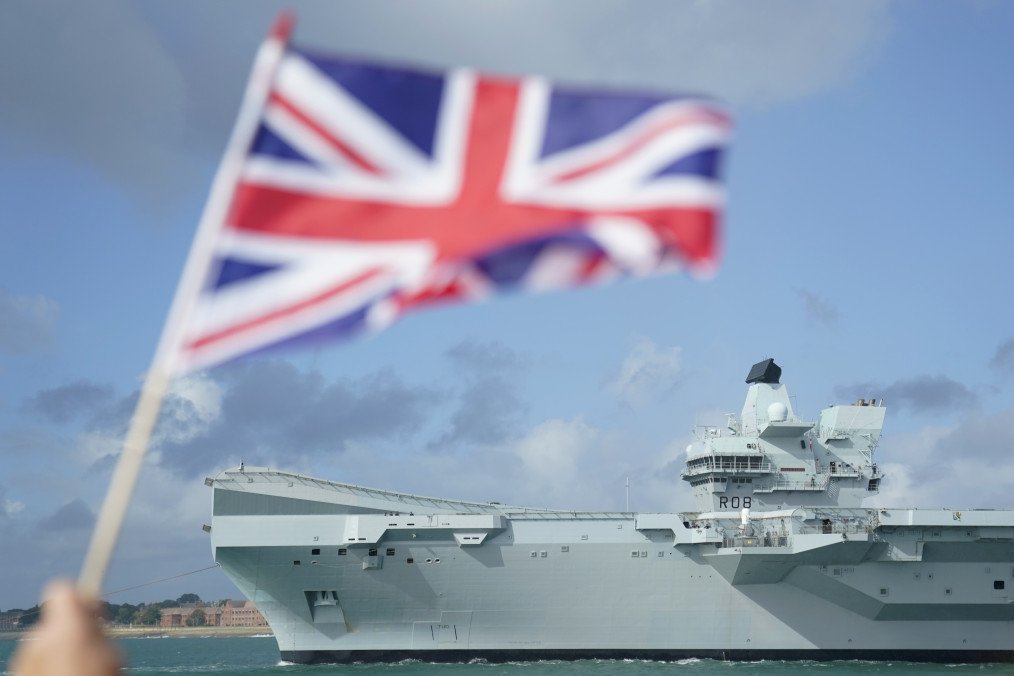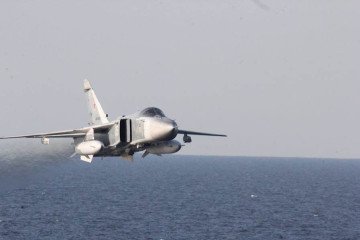- Category
- Latest news
UK’s Air Defense Fails Stress Test Against Russian-Style Missile Attack

British military simulations have revealed that the United Kingdom’s air defenses would have struggled to repel a large-scale Russian missile attack, similar to the one launched against Ukraine at the start of the full-scale invasion in February 2022.
According to The Times on April 26, the Royal Air Force (RAF) conducted the simulation in 2022 using the Gladiator system, a highly classified and realistic virtual environment employed by both British and American armed forces.
The exercise replicated the scale and type of missile strikes Russia used on the first day of its invasion of Ukraine but redirected against British territory.
During the simulation, several missiles successfully breached British defenses. Air Commodore Blythe Crawford, who led the RAF’s Air and Space Warfare Centre until last week, stated that prior to the exercise, the UK military had considered the homeland secure.
He emphasized that the simulation highlighted the need to rethink long-standing assumptions about domestic security.

“For decades, we believed that the rest of Europe would serve as a buffer between us and potential threats. Most military operations were conducted overseas, and we assumed that our bases at home were safe,” Crawford said. “The simulation showed that the home base is now also under threat.”
Following the results, the UK military implemented measures to improve its resilience, such as strengthening aircraft shelters and practicing fighter jet landings on ice in Finland to prepare for non-standard runway conditions.
The RAF’s Gladiator simulation indicated that the sheer volume and complexity of a modern missile and drone assault—combining various types of missiles launched from multiple directions, along with drone swarms—would challenge any air defense system.
Crawford noted that lessons from Ukraine have fundamentally shifted the understanding of air superiority. “Control of the air is now localized, shifting from trench to trench, rather than across an entire theater of operations,” he said, adding that Western militaries must adapt to new realities where advantage can be temporary and highly contested.
Since the original simulation, NATO capabilities have been enhanced, and it is now believed that a significant number of missiles would be intercepted in the event of a real attack. However, experts stress that further efforts are needed, particularly in dispersing critical assets more rapidly across the country during a crisis.
-72e32e2e8a42f8347acfef3f0316f46d.jpg)
Reports indicate that the UK’s defense infrastructure has faced significant cuts over recent decades, including the closure of several airbases and the abandonment of hardened shelters. An upcoming strategic defense review is expected to address these vulnerabilities.
Currently, the UK’s ballistic missile defense relies heavily on its fleet of six Type 45 destroyers. In January 2024, the Ministry of Defense announced an upgrade program for the ships’ air defense systems, including improvements to the Sea Viper missile system, which has been successfully used to intercept ballistic missiles and drones in operational deployments.
A Ministry of Defence spokesperson stated, “The United Kingdom is fully prepared to defend itself against any threat alongside our NATO allies. Our forces are equipped with a range of advanced capabilities to ensure a layered approach to air and missile defense.”
At the same time, defense analysts warn that evolving Russian tactics—including the use of long-range drones such as Shahed variants, which can be launched from ships with the assistance of booster rockets—must be factored into future planning.





-72b63a4e0c8c475ad81fe3eed3f63729.jpeg)

-111f0e5095e02c02446ffed57bfb0ab1.jpeg)
